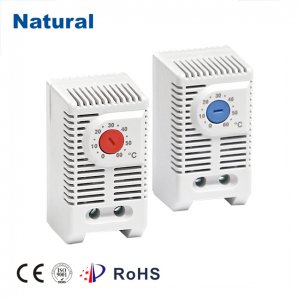In today's fast-paced world, technological advancements are revolutionizing various aspects of our lives, including how we control and regulate the environment around us. One remarkable innovation that has significantly impacted our comfort and energy efficiency is the temperature controller thermostat. This ingenious device plays a pivotal role in maintaining optimal temperatures in homes, offices, and various industrial settings, leading to enhanced comfort, energy savings, and overall well-being.

A temperature controller thermostat is a device that senses and regulates temperature within a defined range. It achieves this by automatically activating heating or cooling systems to maintain the desired temperature. This simple yet incredibly effective device has evolved over the years from its basic mechanical form to today's advanced electronic and smart thermostat models. One of the key benefits of temperature controller thermostats is their ability to create a comfortable and consistent environment. They eliminate temperature fluctuations, which can lead to discomfort and even health issues. With the advent of programmable and smart thermostats, users can preset temperature schedules that align with their daily routines. For instance, a smart thermostat can raise the temperature just before waking up in the morning, lower it during working hours, and adjust it again for the evening, ensuring optimal comfort without manual intervention.
Energy efficiency is another significant advantage offered by temperature controller thermostats. Traditional thermostats often led to wasteful energy consumption by keeping heating or cooling systems running even when not necessary. Modern thermostats, however, can be programmed to reduce energy usage during times of lower occupancy or when the desired temperature is close to being achieved. This not only reduces utility bills but also contributes to environmental sustainability by curbing unnecessary energy consumption.
Smart thermostats have taken energy efficiency a step further by learning user preferences and adapting to real-time conditions. These devices can connect to the internet and gather data from weather forecasts, user behavior, and even occupancy sensors to make informed decisions about when to adjust the temperature. This level of automation ensures that energy is used only when needed, thereby reducing the carbon footprint associated with heating and cooling systems.
Furthermore, temperature controller thermostats have found their place in industrial and commercial settings where precise temperature control is crucial. Industries such as pharmaceuticals, food storage, and electronics manufacturing rely on temperature-sensitive processes. A slight deviation from the required temperature range could lead to product spoilage, reduced quality, or even production shutdowns. Temperature controller thermostats ensure that these critical processes remain stable, enhancing product quality and process efficiency.
In conclusion, temperature controller thermostats have come a long way from being rudimentary devices to becoming sophisticated tools that drive comfort, energy efficiency, and productivity. Whether in homes, offices, or industrial facilities, their impact cannot be overstated. These devices have revolutionized the way we regulate temperature, ensuring optimal comfort, substantial energy savings, and improved environmental responsibility. As technology continues to advance, we can expect even more innovative features from temperature controller thermostats, further enhancing their role in our lives.
 28 items Patent
28 items Patent
 28 items Patent
28 items Patent
 28 items Patent
28 items Patent

